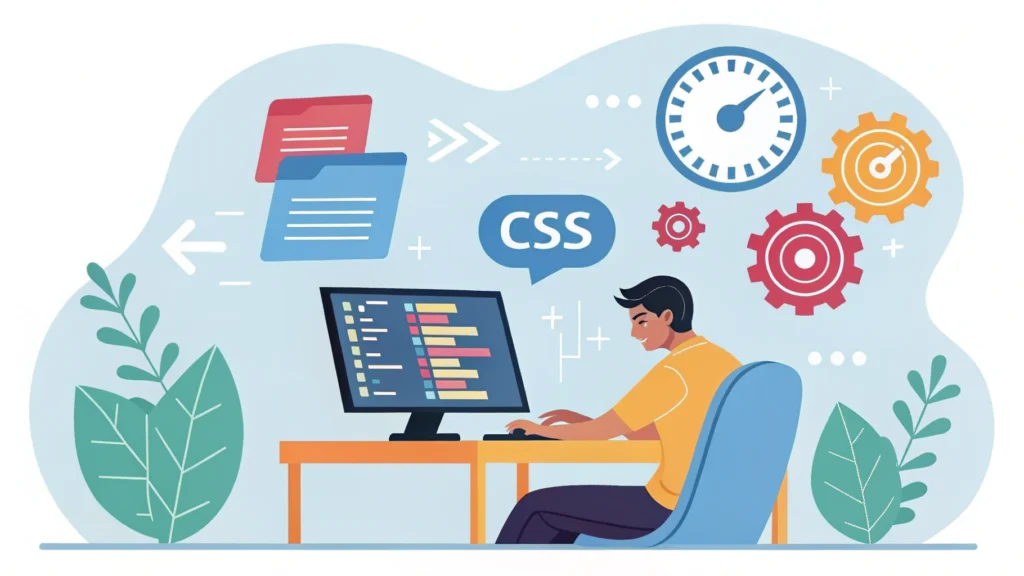
Introduction
Website speed is more than a user experience factor—it’s a major SEO ranking signal. One quick and effective way to enhance your website’s performance is to minify CSS files. By removing unnecessary spaces, comments, and formatting from your stylesheets, you can significantly reduce load time and improve your Core Web Vitals.
In this guide, you’ll learn how to minify CSS files using simple steps, understand why it’s important, and discover the best free tool to do it—like the WebToolsLab CSS Minifier.
What Does It Mean to Minify CSS?
Minifying CSS means stripping out all non-essential characters from your CSS code. This includes:
- Whitespace and indentation
- Comments and line breaks
- Extra semicolons or formatting
The resulting file is lighter, faster, and more efficient. It functions exactly the same, but loads much quicker in browsers.
Why Should You Minify CSS?
Here are the top reasons to minify your CSS:
- Faster page load time on all devices
- Improved SEO rankings (especially for mobile-first indexing)
- Lower bounce rates due to better performance
- Enhanced user experience
- Reduced bandwidth usage
Google PageSpeed Insights and other tools recommend CSS minification as a key fix for slow websites.
How to Minify CSS Files (Step-by-Step)
Step 1: Copy Your CSS Code
Open your stylesheet (e.g., style.css) and copy the entire code.
Step 2: Use an Online CSS Minifier Tool
Visit the WebToolsLab CSS Minifier. It’s free, fast, and beginner-friendly.
- Paste your CSS code into the input box
- Click the “Minify CSS” button
- The minified version appears instantly in the output box
Step 3: Download or Replace Your File
You can copy the output or download the minified code as a .css file. Replace the original file on your server with the new one.
Step 4: Link the Minified CSS in Your HTML
If you renamed your file (e.g., style.min.css), update your HTML link tag:
bashCopyEdit<link rel="stylesheet" href="style.min.css">
Example: Before and After Minification
Before Minification:
cssCopyEditbody {
font-family: Arial, sans-serif;
margin: 0;
padding: 0;
/* Remove background */
}
After Minification:
cssCopyEditbody{font-family:Arial,sans-serif;margin:0;padding:0;}
This saves valuable bytes, especially across large files.
Best Free Tools to Minify CSS Online
1. WebToolsLab CSS Minifier
- No ads, clean UI
- Instant minification
- Works with large files
- Free forever, no signup
While you’re there, you can also try tools like:
Bonus Tip: Combine CSS and JS Minification for Best Results
Minifying CSS is just one step in website optimization. You should also:
- Minify JavaScript using the JS Minifier
- Compress images using the JPG to WebP Converter
- Clean up HTML with the HTML Minifier
This multi-step approach gives your site the best possible speed and SEO advantage.
FAQs
What does it mean to minify CSS?
Minifying CSS removes unnecessary characters (like spaces and comments) from CSS code to make it smaller and faster-loading.
Does minifying CSS really improve website speed?
Yes. Smaller CSS files load faster, which directly improves page speed, especially for mobile users on slow networks.
How can I minify CSS files online for free?
You can use the WebToolsLab CSS Minifier to minify CSS code instantly without signing up or installing anything.
Conclusion
Optimizing your website’s performance starts with clean, lightweight code—and minifying CSS is one of the easiest ways to achieve that. Whether you run a blog, an online store, or a developer portfolio, faster loading means better user retention and stronger SEO performance.
Get started now with the WebToolsLab CSS Minifier, and while you’re there, explore other free optimization tools to take your site to the next level.
Ready to speed up your website? Visit WebToolsLab.io today!